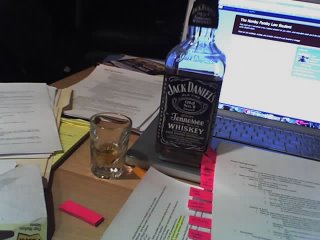Potential client calls can take a lot of time especially if you do not know what you are doing. In handling these calls, you want to ascertain if the client would be good for your firm and has a decent chance to get a settlement quickly.
The person that you will be speaking with has made a bold step in contacting you, the attorney, and they will want assurances of your qualifications and experience all the while wasting a lot of your time.
“I have a case and I want to talk to a lawyer”
Step Zero: Presume that the person does not have a case. Trust me…it’s better this way.
“I was under the care of a doctor for 12 years and he found out that I was doing heroin and he refused to be my doctor any longer. And now I keep falling…can I sue my doctor?
Step One: Find out what sort of case this person believes that they have (i.e. Car Accident, Slip and Fall, Malpractice, etc.)
A. It could be a case. Proceed to Step Two
B. Not a case. “I’m sorry, it seems that you are looking to blame people for your problems and the law doesn’t reward klutzes. I’m not going to be able…hello? hello?”
“I was hit by a car in 1990”
Step Two: When was the date of the accident?
A. The statute of limitations has not expired: Begrudgingly proceed to step three.
B. After the expiration of the Statute of Limitations: “I’m sorry there isn’t anything that I am going to be able to do for you…I know that that’s not fair…but that’s the law.”
“It was in the casino boat in Mississippi…does that matter?”
Step Three: Where was the accident?
A. In the state where your law license is valid: Proceed to step four
B. Out of state: “I’m sorry, you will have to talk to an attorney that is licensed in your jurisdiction. Unfortunately, I don’t have a lawyer that I can refer you to.”
C. In Prison: “I’m sorry, you need to talk to a civil rights attorney.’
“…I slipped getting out of my car in a parking lot at 3 in the morning while it was snowing. There was snow everywhere and it hadn’t been plowed yet…”
Step Four: Is there liability?
A. Liability can be proven: Unfortunately, you need to go to step five.
B. No Liability: “I’m sorry, the law states (insert common law regarding why they don’t get paid) and unfortunately I won’t be able to help you…yes…I know…that is ‘some bouleshit’…I wish I could help.”
C. Shaky Liability at Best: “I would suggest that you talk to a civil rights attorneys as they may be able to help you out better.”
“But I could have died!”
Step Five: Damages.
A. There are discernable, actual damages. Yeah…you’ve got to go to step six
B. No damages: “Just because you could have died doesn’t mean that you have a case. Call me back when you actually die.”
“The person that hit me fled the scene…does that mean I can sue the city?”
Step Six: Is there a Responsible Party with a Responsible Bank Account.
A. There is valid insurance: Sign the client up.
B. There is no valid insurance: refer the client to a civil rights attorney
C. There is no valid insurance, but the tortfeasor is independently wealthy: if you believe in Santa Claus, sign this person up.
I hope to streamline your process and allow you to quickly sign up all of my potential clients. So that they can be your problem and not mine.






|